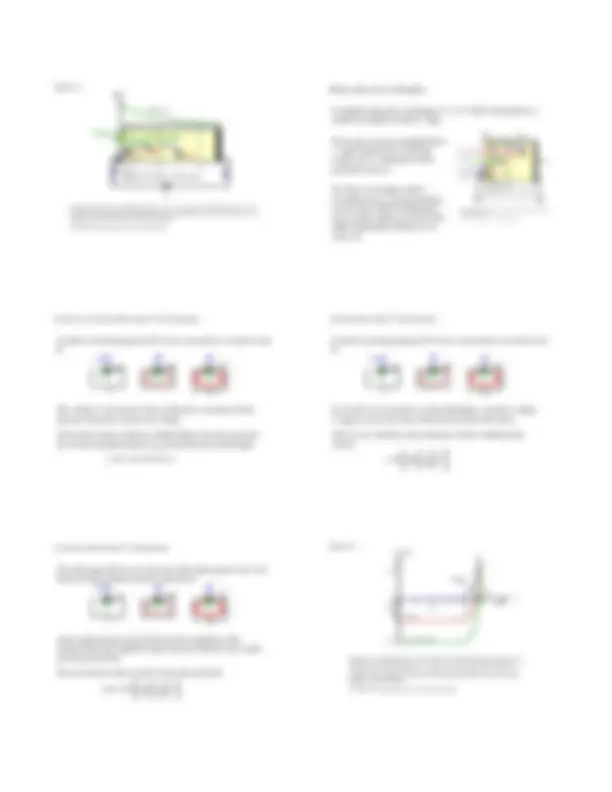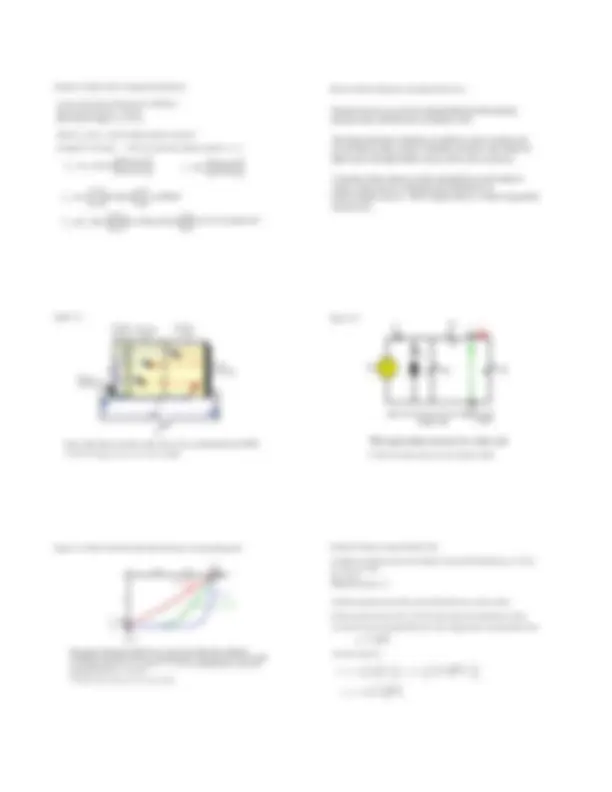






Study with the several resources on Docsity

Earn points by helping other students or get them with a premium plan


Prepare for your exams
Study with the several resources on Docsity

Earn points to download
Earn points by helping other students or get them with a premium plan
Community
Ask the community for help and clear up your study doubts
Discover the best universities in your country according to Docsity users
Free resources
Download our free guides on studying techniques, anxiety management strategies, and thesis advice from Docsity tutors
Material Type: Notes; Professor: Tatro; Class: Optoelectronic Engineering; Subject: Electrical & Electronic Engr; University: California State University - Sacramento; Term: Unknown 1989;
Typology: Study notes
1 / 8

This page cannot be seen from the preview
Don't miss anything!





H-Alpha Solar
Blogeko
GreenAndGoldenEnergy.com.au
Section 6.1 Solar Energy Spectrum
0
Black body radiation at 6000 K AM
AM1.
0.2 0.4^ 0.6^ 0.8^ 1.0 1.2 1.4^ 1.6 1.8^ 2.
0
Wavelength (μm)
Spectral Intensity dW cm-2^ (μm) -
or kW m-2^ (μm) -
The spectrum of the solar energy represented as spectral intensity ( I λ) vs wavelength above the earth's atmosphere (AM0 radiation) and at the earth's surface (AM1. radiation). Black body radiation at 6000 K is shown for comparison (After H.J. Möller, Semiconductors for Solar Cells , Artech House Press, Boston, 1993, p.10)
From S.O. Kasap, Optoelectronics and Photonics: Principles and Practices (Prentice Hall)
Figure 6.
Solar Energy Spectrum
2
Solar Energy Spectrum
Direct Diffuse
(a) Illustration of the effect of the angle of incidence θ on the ray path length and the
definitions of AM0, AM1 and AM(sec θ). The angle α between the sun beam and the horizon
is the solar latitude (b) Scattering reduces the intensity and gives rise to a diffused radiation
Atmosphere
AM
AM
θ
AM(sec θ)
h 0^ h
α
(a) (b)
α
Tilted PV device
Earth
© 1999 S.O. Kasap, Optoelectronics (Prentice Hall)
Figure 6.2 Example 6.1.1 on page 256 Solar energy conversion
2
Energy per house
Incident solar energy per unit area × Efficiency
Area =
2
sec (500 )(86, 400 )
3600sec (6000 )( )(0.15)
W day
W hour
m day hour
= ⋅
2 =13.3 m
Example 6.1.1 on page 256 Solar energy conversion
Neutral n -region Neutral p -region
W
Eo
Voc
Medium λ
Long λ
Depletion region
Drift Diffusion
Finger electrode
Back electrode
A n A p
Le
The principle of operation of the solar cell (exaggerated features to highlight principles)
Lh
Short λ
© 1999 S.O. Kasap, Optoelectronics (Prentice Hall)
Finger electrodes
p
n
Bus electrode for current collection
Finger electrodes on the surface of a solar cell reduce the series resistance
© 1999 S.O. Kasap, Optoelectronics (Prentice Hall)
Figure 6.
Monocrystaline
Polycrystaline
Neutral n -region Neutral p -region
W
Eo
Voc
Medium λ
Long λ
Depletion region
Drift Diffusion
Finger electrode
Back electrode
A n A p
Le
The principle of operation of the solar cell (exaggerated features to highlight principles)
Lh
Short λ
© 1999 S.O. Kasap, Optoelectronics (Prentice Hall)
pn Junction Photovoltaic I-V Characteristics
V
I (mA)
0.2 0.4 0.
0
Voc
Isc = – Iph
V ′
The Load Line for R = 30 ž ( I-V for the load)
I-V for a solar cell under an illumination of 600 Wm-2.
Operating Point
Slope = – 1/ R
P
I ′
(a) When a solar cell drives a load R , R has the same voltage as the solar cell but the current through it is in the opposite direction to the convention that current flows from high to low potential. (b) The current I ′ and voltage V ′ in the circuit of (a) can be found from a load line construction. Point P is the operating point ( I ′, V ′). The load line is for R = 30 ž.
Light I
R
V
I
(a) (b)
© 1999 S.O. Kasap, Optoelectronics (Prentice Hall)
Figure 6.
pn Junction Photovoltaic I-V Characteristics
ph 0 exp^ k TB^1 e
V P I V I V V I
⎡ (^) ⎛ ⎞ ⎤ = ⋅ = − + ⋅ (^) ⎢ (^) ⎜ ⎟−⎥ ⎢⎣ ⎝ ⎠ ⎥⎦
max max (^0) ph 0 exp (^) k TB (^1 0) max exp k TB e b e
dP V e V I I I V dV k T
max max max 0
exp 1 exp
ph
t t t
max max
0
1 exp 1
ph
t t
max max
0
exp see homework 6.
ph
t t
pn Junction Photovoltaic I-V Characteristics
max max
0
1 exp 1
ph
t t
m m
sc oc
I V FF I V
=
Problem 6.3 A solar cell driving a resistive load
A solar cell of area A = 4 cm^2 in connected to drive a load R.
Illumination = 600 W/m^2 behavior is shown in the figure.
Let the load R = 20 Ω and the intensity change to 1 kW/m^2.
What are the current and voltage in the circuit?
V
I (mA)
0.2 0.4 0.
0
Voc
V ′
The Load Line for( I-V for the load) R = 30 ž
I-V for a solar cell under an illumination of 600 Wm-2. Operating Point
Slope = – 1/ R
P
I ′
The solar cell is now used under an illumination of 1 kW/m^2. The short circuit
current Isc must be scaled by a factor of 1,000/600 = 1.67.
V ′ (^) V
I (mA)
0.4 0.
0
The load line for R = 20 ž ( I-V for the load)
I-V for a solar cell under an illumination of 1000 Wm -.
P
I ′
M
The figure shows the load line for R = 20 Ω.
The corresponding current I’= 22.5 mA.
The voltage V’ = 0.45 V.
Problem 6.3 A solar cell driving a resistive load
What is the power delivered to the load?
Pin = (Light Intensity)(Surface Area)
What is the efficiency of the solar cell in this circuit?
The efficiency η is given by
' ' 3 Poutput I V (22.5 10 A )(0.45 V ) 10.1 mW
− = = × =
4 2 2 2
2 10 in (1, 000^ W^ )(4^ m ) m cm
P cm
100%
out
in
P
P
η = ×
Problem 6.4 Open Circuit voltage and illumination
A solar cell under an illumination of 100W/m^2.
Short circuit current Isc = 50 mA Open circuit voltage Voc = 0.55 V.
What is Isc and Voc when the light intensity is halved?
Example 6.3.2 showed (We will assume the ideality constant n = 1.)
2 2 1 1
oc oc t ln
Intensity V V nV Intensity
2 2 1 1
sc sc
Intensity I I Intensity
2 2 1 1
sc sc
I I mA I
= 25 mA
2 2 1 1
ln 0.55 (0.0259) ln 2
oc oc t
Section 6.4 Series Resistance and Equivalent Circuit
Neutral n -region
Neutral p -region
Finger electrode
Back electrode
Depletion region
R (^) L
R (^) s
R (^) p
Series and shunt resistances and various fates of photegenerated EHPs.
© 1999 S.O. Kasap, Optoelectronics (Prentice Hall)
Figure 6.
The equivalent circuit of a solar cell
© 1999 S.O. Kasap, Optoelectronics (Prentice Hall)
Figure 6.
I (mA)
V
0 0
0.2 0.4 0.
5
10
Vo c
I (^) s c
Rs = 0
Rs = 20 Ω
Rs = 50 Ω
I (^) p h
The series resistance broadens the I-V curve and reduces the maximum available power and hence the overall efficiency of the solar cell. The example is a Si solar cell with n ≈ 1.5 and Io ≈ 3 × 10 -6^ mA. Illumination is such that the photocurrent I (^) ph = 10 mA.
© 1999 S.O. Kasap, Optoelectronics (Prentice Hall)
Figure 6.11 Effect of Series and parallel resistance to the operating point. Problem 6.6 Series Connected Solar Cells
Consider two identical solar cells subject to the same illumination Iph = 10 mA.
I 0 = 25 x 10-6^ mA
RS = 20 Ω Ideality constant n = 1
Find the maximum power that can be delivered by two cells in series.
In this case there are two RS = 20 Ω in series and two pn junctions is series.
Thus the current is
Let I be the current through both and Vd the voltage across one pn junction then
(2 ) 2
s d
V I R V
0 exp^1
d ph t
V I I I V
⎡ ⎛ ⎞ ⎤ = − + (^) ⎢ ⎜ ⎟−⎥ ⎢⎣ (^) ⎝ ⎠ ⎥⎦
0
(2 ) exp 1 2
s ph t
V I R I I V
⎡ ⎛ − ⎞ ⎤ = − + (^) ⎢ ⎜ ⎟−⎥ ⎢⎣ (^) ⎝ ⎠ ⎥⎦
0
(2 ) exp 2
s ph t
V I R I I V
⎛ − ⎞ ≈ − + (^) ⎜ ⎟ ⎝ ⎠
Solar One Project – Mojave, California
SEGS Project – Kramer Junction, California
Stirling Engines
R.D. McConnell, J. Thompson, National Renewable Energy Laboratory
Concentrator Photovoltaic Systems
Spectrolab has teamed up with the Arizona Public Service (APS) to develop and
deploy the first grid-connected concentrator system that utilizes Spectrolab’s
GaInP/GaAs/Ge triple-junction solar cells.
This module is operational at the APS Solar Test and Research (STAR) facility in
Tempe, Arizona under 500-sun concentration and has been operational since April
Concentrator Cell on Cooling Plate
Arionza Public Service (^) Solar Cells Materials, Devices and Efficiencies
R.D. McConnell, J. Thompson, National Renewable Energy Laboratory
Best Research-Cell Efficiencies Dye Solar Cell
Dye Sensitized Nanocrystalline Solar Cell (DYSC)
Solar Flight!
HELIOS prototype close-up on the lakebed, August 18, 2001, Photo Tom Tschida;
NASA Dryden Flight Research Center
End of Chapter 6